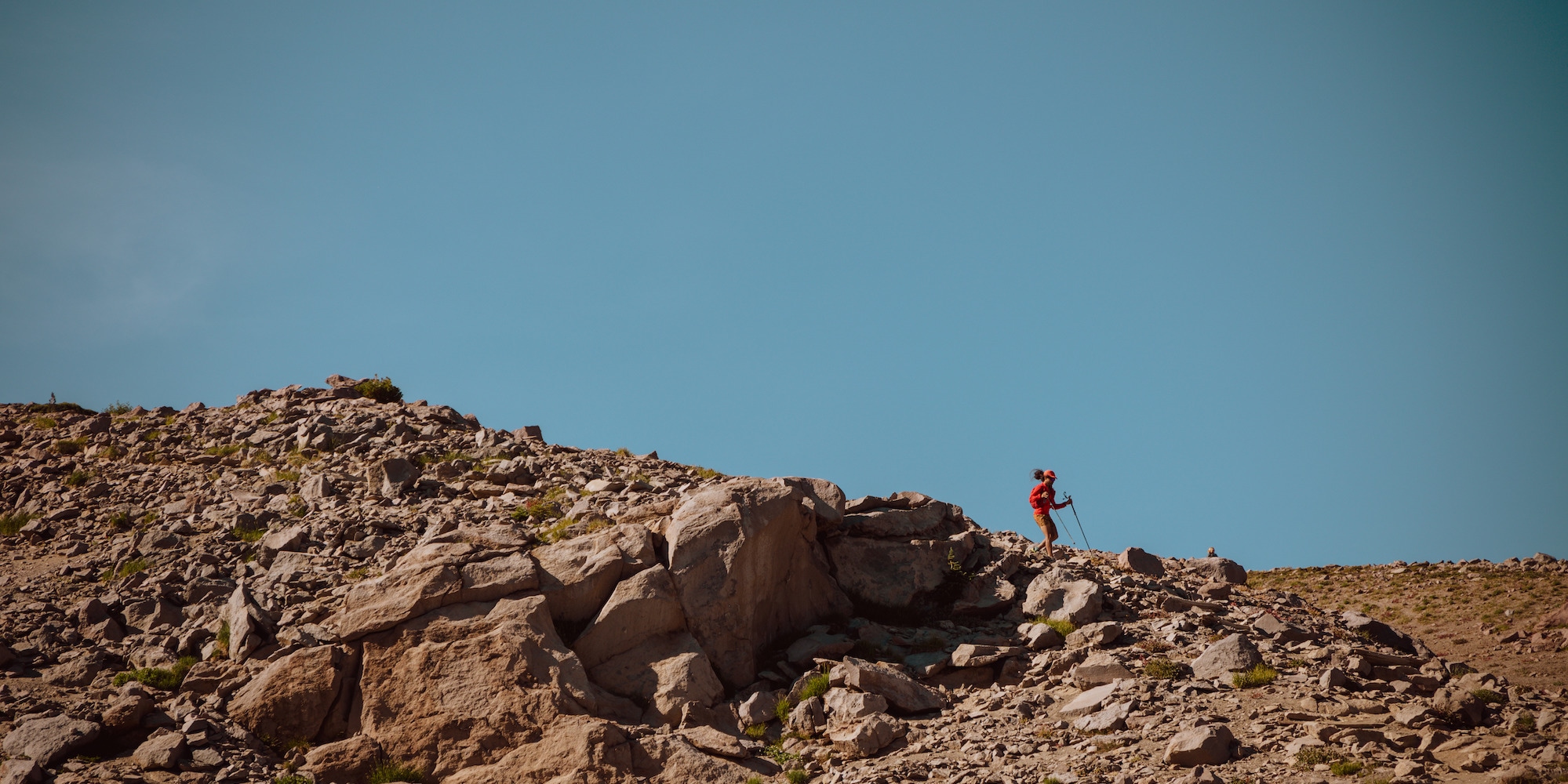To hear Alan Ortega and Devin Arnold describe the 93 miles of trail that circumnavigate Mount Rainier is like listening to a best-of list for outdoor clichés: “pristine,” “gorgeous” and “magical” come up. So too do more vivid descriptions of alpine meadows, turquoise lakes and patches of wild blueberries. Clearly, the Wonderland Trail, as this loop is known, comes by its name honestly. “You’re looking at the same mountain, but every time you get to a high point or you come alongside a ridge, it’s just breathtaking,” Ortega says. “You’re seeing the mountain in such a different light every time.”
Ortega and Arnold, who met while working together at the REI in Huntington Beach, California, in 2014 and bonded over a shared passion for trail running, took on the Wonderland Trail this past September. Though people often take 10-14 days to backpack the strenuous route, they decided to lace up their Brooks Caldera 6s and La Sportiva Wildcats, respectively, and finish the trail in just three days. Braden Van Dragt, an in-house video producer for REI, rounded out the trio, acting as the videographer and documentarian.
Watch the video
The trail’s beauty, as well as the runners’ personal triumphs and trials (and to a lesser extent, their gear choices), are highlighted in the short film, My 3 Days on the Wonderland Trail:
Jump ahead: Take me straight to the gear.
A Brief History of the Wonderland Trail
Not that the adventure started out as film fodder. Annual trail running adventures are a key way Ortega and Arnold keep in touch since they now live in different states; Ortega is the senior sales manager at the REI flagship store in Seattle and Arnold is working on a master’s degree in environmental science at the University of Colorado, Denver. Last year, the pair spent a day exploring The Enchantments, another of Washington’s iconic trail systems, and Arnold was eager for another adventure in what she calls the “fairytale wonderland” of the Pacific Northwest in the summer.
The Wonderland Trail was a natural choice for their next bucket-list trip given it’s only two hours from Ortega’s Seattle home base. Completed in August 1915, the route traverses the five primary river valleys extending from Mount Rainier, what Indigenous Peoples–the Cowlitz, Muckleshoot, Nisqually, Puyallup, Squaxin Island, Yakama and Coast Salish people–have considered the sacred Mount Tahoma or Mount Tacoma, giver of life, since time immemorial.
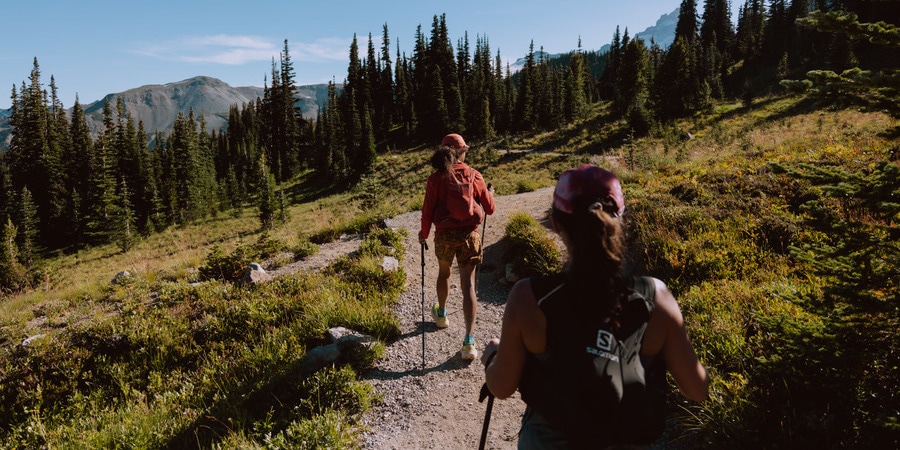
The loop originally covered a much longer distance (130-140 miles) at a lower elevation, which meant less snow and easier travel for patrolling rangers. Historian Paul Sadin notes, however, that it was “less scenic than today’s path.” In the 1920s, when trail improvements began, the park shortened the route’s length, made it more accessible to “everyday visitors” and began promoting it as the Wonderland Trail, “the most glorious trail in the world,” in order to attract tourists. Given that thousands of people from around the world now day-hike and backpack along portions of the route each year, those early marketing efforts made an impact–Ortega and Arnold are among the beneficiaries.
How to Run the Wonderland Trail
Both Ortega and Arnold knew they could train for it on their own–and as numerous unsupported FKTs attest, even finish it solo–but they also recognized tackling the trail with a compatible running buddy (and the support of a small crew onboard) would make the experience richer, safer and considerably more fun. “No matter what, we can go through this big struggle and we can still crack jokes and make fun of things and make our misery enjoyable,” Arnold says. “That’s why we’re great partners.”
Struggle was indeed a part of their experience on the trail. No matter how much prep work is put in ahead of time–even incorporating practice tips from trail running legend Scott Jurek–there’s no getting around the fact that 93 miles and 22,000 feet is a lot of distance and elevation to cover over three days. “That’s something that people should know about the trail: It just does this,” Ortega says, mimicking a steep upward slant followed by a steep downward slant, “all the time in a way that you don’t expect. You’re like, ‘OK, there will be some climbing. So, the climbing will be first?’ And you’re like, ‘No. The climbing will be always.’”
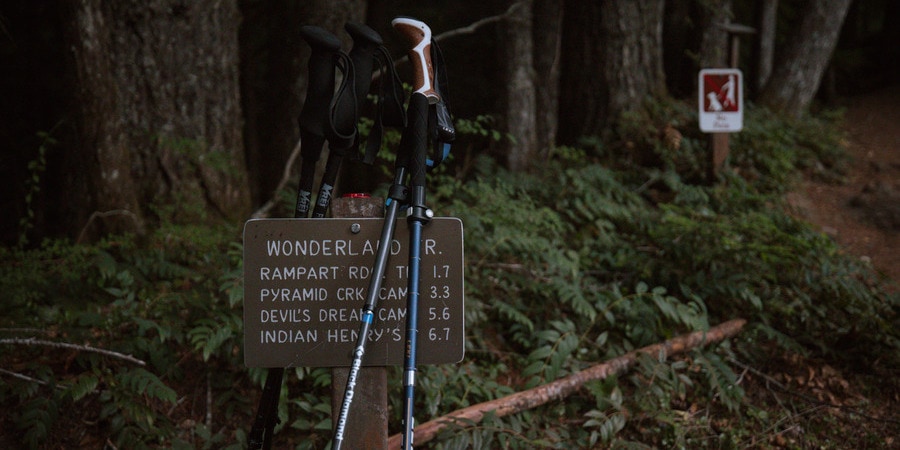
Having the appropriate gear eased the strain, at least somewhat. Salomon hydration vests ensured they stayed well hydrated. Oakley and Goodr sunglasses kept the sun (yes, it was sunny during their trip!) at bay. Chafe-free shorts from Janji and tops from Patagonia prevented uncomfortable hot spots, and the Distance Carbon Z Trekking Poles from Black Diamond helped support Arnold after she strained her knee.
The best thing about the gear, however, is the fact that it “got out of the way,” Van Dragt says. It worked, and let them focus on the hard-earned wonderland in front of them.
Gear Guide
Here are the essentials that Ortega and Arnold wore, carried and ate on the Wonderland Trail—as well as their thoughts on why you should consider these picks for your next trail-running adventure.
Brooks Caldera 6 Trail-Running Shoes (Women’s, Men’s, ) and La Sportiva Wildcat 2.0 GTX Trail-Running Shoes (Women’s, Men’s)
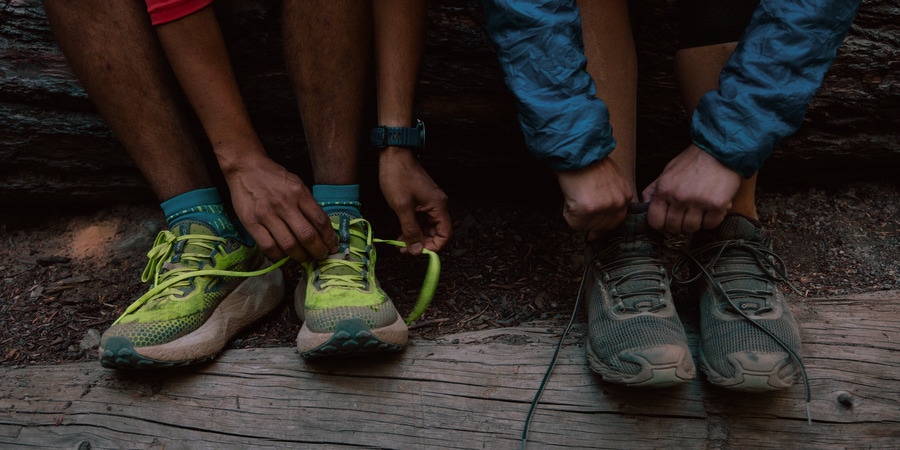
With its chunky midsole layer, it’s clear the Calderas are designed with comfort in mind. “When I don’t want to feel anything underfoot flying downhill and don’t want to feel weighed down, I reach for the Calderas,” says Ortega. Internal midfoot saddles, wide bases and split-heel outsoles further enhance stability on descents and provide a roomy fit–even for fatigued, swollen feet. “Brooks designed this shoe with ultrarunning in mind, and after double-digit hours on the trail, I can confidently say they got it right.” $150
Featuring an aggressively lugged outsole, waterproof protection and a heavier weight (about 1.5 – 2 pounds, for the women’s and men’s versions, respectively), the Wildcat 2.0 GTX is certainly among the more burly trail runners. Perhaps that’s unsurprising given La Sportiva’s long history as a mountaineering shoe maker (it’s the go-to brand on many Everest ascents). Arnold, in fact, had planned to use her Wildcats as a sturdy, summer backpacking shoe. “But once I ran with them, I realized how good they work for me,” she says about her second shoe choice for the journey. “I tend to roll my ankles when I trail run, so the weight of these shoes almost helps to keep me grounded and stabilized better than others I’ve used in the past.” $165
Altra Mont Blanc Trail-Running Shoes (Women’s, Men’s) and Altra Timp 4 Trail-Running Shoes (Women’s, Men’s)
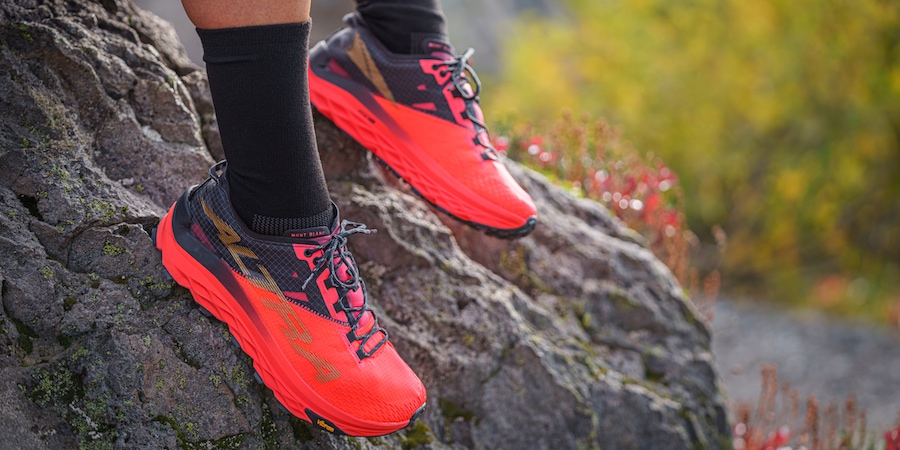
The Mont Blanc Trail-Runners from Altra manage to minimize weight without skimping on comfort. This innovation is thanks to a host of proprietary tech, including the ahh-inducing EGO MAX midsole foam and Balanced Cushioning platform, which are paired with featherweight uppers. Dual micro and macro lugs boost traction on any terrain. In layman’s terms: “The upper is minimal yet comfortable and the cushion/traction combination of the midsole and outsole are second to none,” Ortega says. “I feel fast and free whenever I lace these shoes up.” $180
Altra is known for its proprietary FootShape toe boxes, which allow the runner’s toes to splay out in their natural position, thus creating a solid base. They’re also great for runners, like Arnold, with wider feet. She brought along the Timp 2 on her Wonderland run, calling it an “overall great, lightweight trail runner.” That shoe’s newer iteration, the Timp 4, features that same generous toe box, grippy MaxTrac outsoles and 0-millimeter heel-to-toe drop, but with an improved fit and even more cushioning. $160
Brooks Catamount 2 Trail-Running Shoes (Men’s, Women’s)
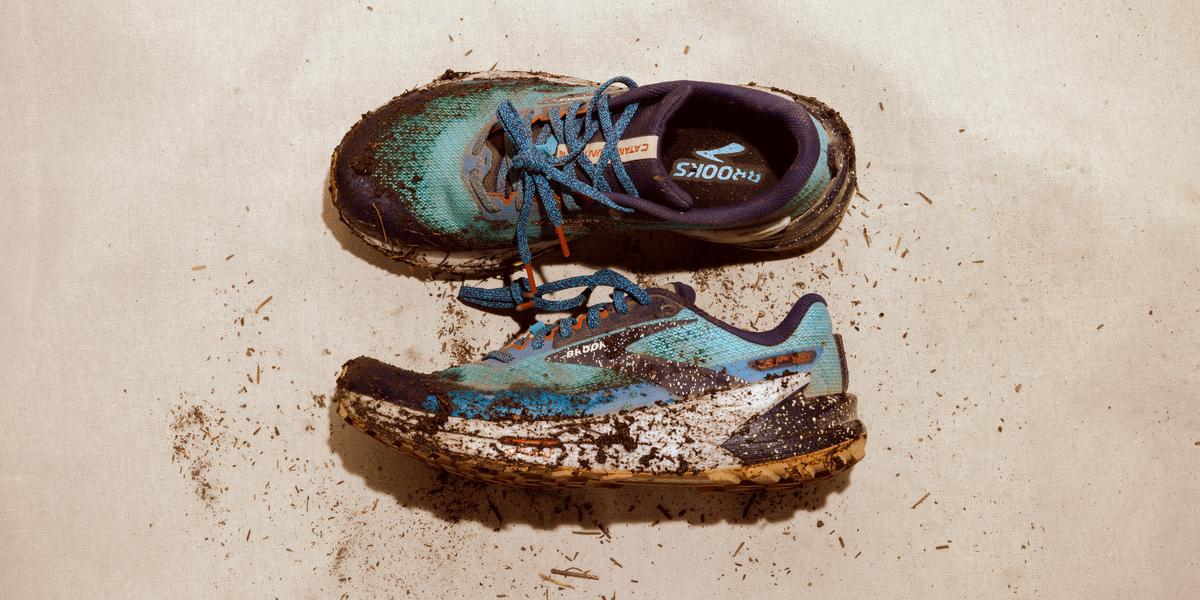
On the third day, Ortega wore the Brooks Catamount 2: a nimble, fast shoe that pleasantly surprised his swollen, tired feet after an ultra distance of hilly, grindy running. Read his in-depth tested review of the versatile new trail runners here. $170.
Patagonia Endless Run Shorts – Women’s
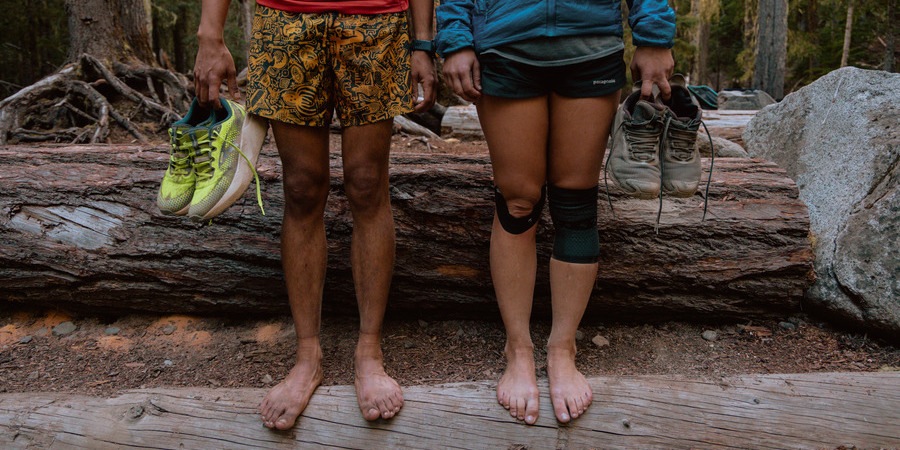
Naturally, as an environmental scientist, Arnold favors outdoor brands that sync with her values. As such, she sported the Patagonia Endless Run shorts, which are made from post-consumer recycled nylon—in other words, fishing nets. “I think more companies should strive to do as Patagonia, [which] tries its best to … care and respect the planet by giving back, recycling [and] promoting repair over replacing,” she says. Add to that honorable track record products that just work. “I really loved these shorts,” Arnold says. “They don’t ride up while running, … the pockets on the side keep everything close by, and having large side pockets is so nice when going for longer runs.” $69
Salomon Adv Skin 12 Set Hydration Vest and Salomon Sense Pro 10 Set Hydration Vest
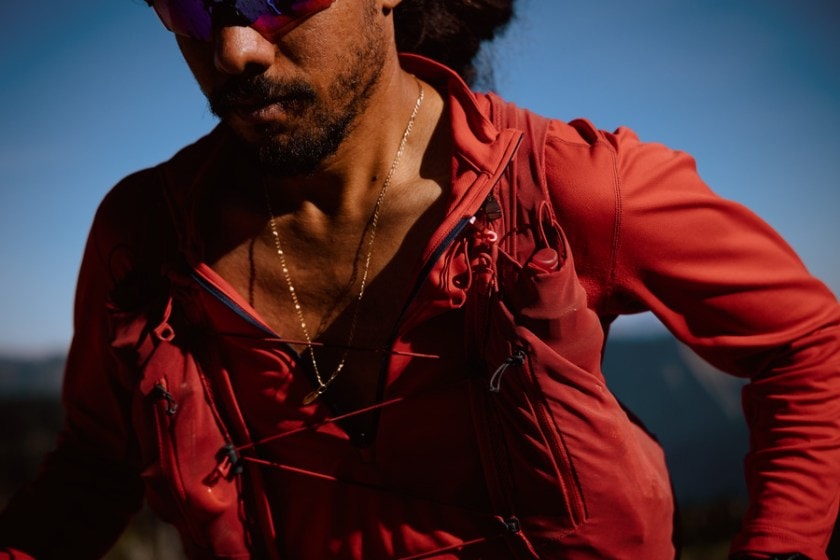
Staying hydrated is essential for high-mileage days, but nobody wants to carry around a clunky, plastic water bottle for all those trail hours. Hydration vests–with their easy-access, soft, flask-style water containers–are the solution. Ortega, Arnold and Van Dragt turned to Salomon’s offerings for their balanced Sensifit construction. Ortega and Van Dragt call out the Goldilocks-approved amount of space in the Adv Skin 12 Set Hydration Vest: “It has tons of easy-to-access storage and a snug, comfortable fit with almost no bounce,” Van Dragt says. “The best part about this vest is that I don’t have to take it off to access all my most-used gear—food, water, phone, jacket, water filter. Everything is in reach.” $160, $180
Oakley Radar EV Path Sunglasses and goodr Circle Gs Polarized Sunglasses
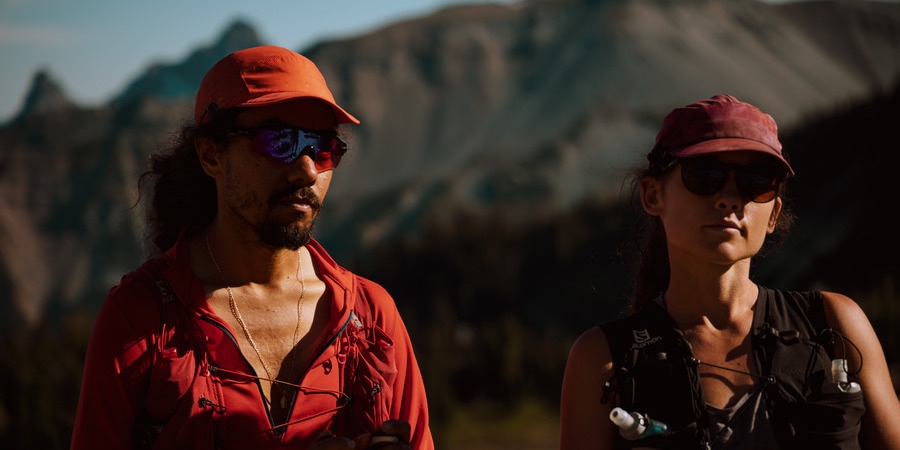
“My ride-or-dies for the past 7 years, this frame and lens (Trail Prizm) pair works perfect for staying on my face during active pursuits, whether that’s riding my bike, hiking leisurely or running 93 miles up, down and around Pacific Northwest volcanoes,” Ortega says. Oakley’s proprietary Prizm lenses expertly control light transmission, which translates to colors precisely tuned to increase contrast and enhance visibility. “That’s huge in keeping me going as fast (and as safe) as I want,” he adds. $211 – $261
Polarized lenses? Check. Grippy nose coating to deter slippage even when sweaty? Yep. Full UV400 protection to block nasty UVA and UVB rays? Oh yeah. And these goodr shades come in go-bold-or-go-home orange in a lightweight package perfect for tackling the Wonderland–or just your favorite neighborhood loop. $25
Black Diamond Distance Carbon Z Trekking Poles
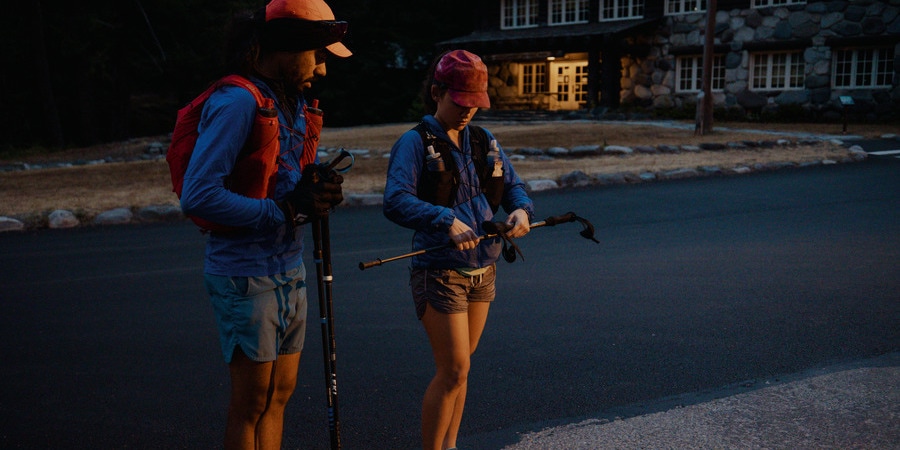
Four legs are better than two on rocky, unstable terrain. But if you don’t want to bear crawl your way over the trail (though it would be an incredible workout), invest in a pair of trekking poles. The Distance Carbon Z Poles from Black Diamond are a great choice for their minimal weight (just 4.9 ounces per pole, based on the 120-centimeter length) and comfy foam grips. Their most impressive feature, however, is their namesake tri-fold design, which allows the poles to break down into a “Z” with three short sections. This makes them easy to stash in a pack on smoother patches of trail and then easily reconstruct for the next boulder field. $179.95
Green Trails Map 269S – Mount Rainier Wonderland
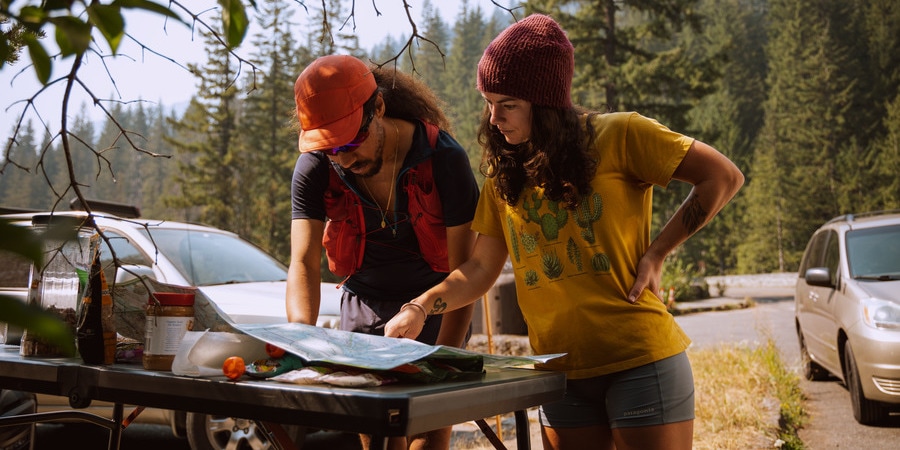
“Green Trails are the standard Northwest map,” Ortega says. The reason: They feature a detailed, topographic rendering of the trail (including an elevation profile) printed on waterproof, tear-resistant paper. $18
Garmin inReach Mini 2
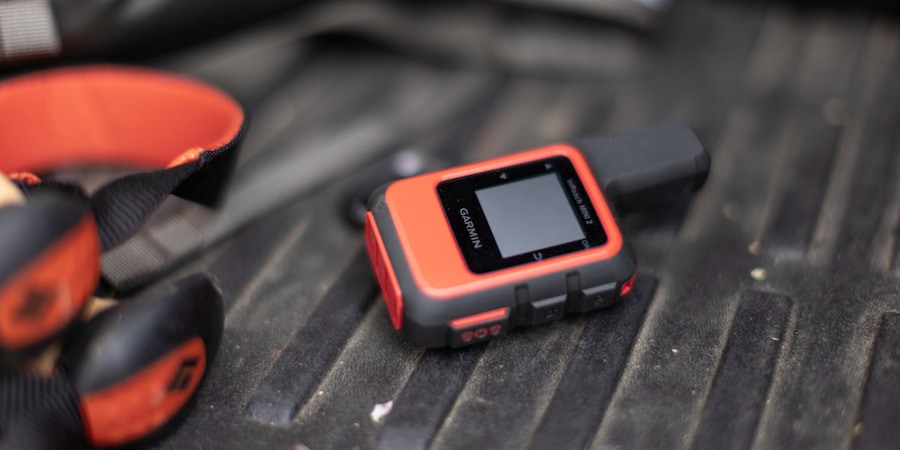
Ortega, Arnold and Van Dragt were watching their pack weight during their 93-mile circumnavigation of Mount Rainier. They were not, however, willing to sacrifice safety in the name of reducing pounds. Clocking in at just 3.5 ounces, the inReach Mini 2 from the GPS experts at Garmin let the trio have their cake and eat it too. The device facilitates global two-way communication, tracking and interactive SOS capabilities; location-sharing; a digital compass; and more. (An active satellite subscription is required). $400
Honey Stinger Waffle and YES Bar Snack Bar
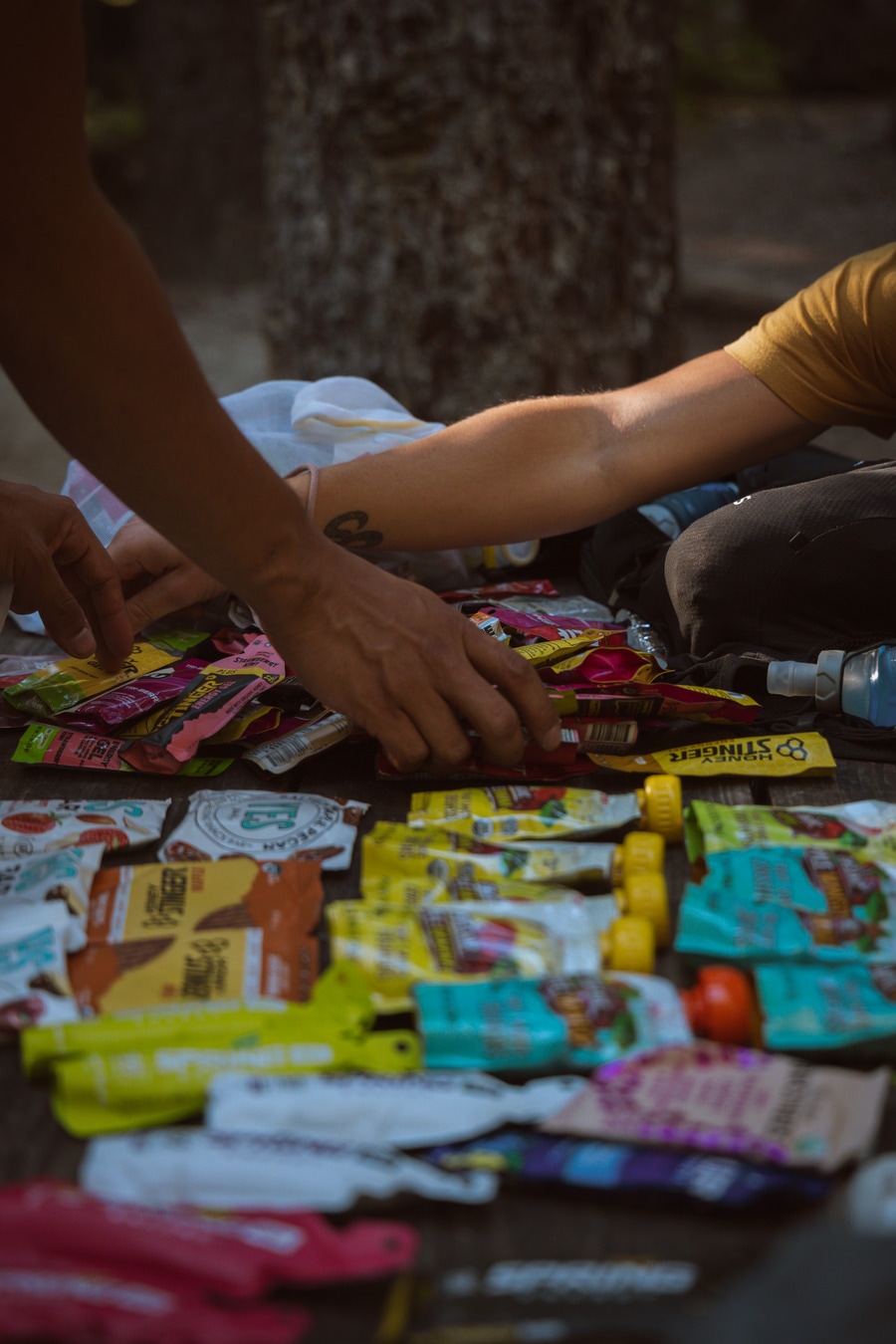
Two, thin layers of baked, battery goodness sandwiching a thin layer of organic honey, Honey Stinger Waffles deliver easy-to-digest energy that tastes like a treat. “Sweet breakfast flavors on the trail? Yes please!” Ortega jokes. Plus, they stay solid in hot weather but don’t turn too hard in cold weather. “I haven’t had them freeze or melt on me once,” he says. $1.95 – $2
Foodie-approved taste, quality ingredients and soft-baked texture unite in YES Bar snacks. Made without preservatives and artificial ingredients, these bars are also gluten-free, grain-free, dairy-free, soy-free and egg-free. They’re also keto-friendly, kosher-certified, and have just half the sugar of an apple in each bar. “Delicious and nutritious, YES Bars are an easy way to say YES to my adventures,” Ortega says. $2.50
